As an architectural and interiors photographer, I own more lights than I even want to think about. Pelican cases full - hot lights, speedlights, monolights, color balanced bulbs, and modifiers to go along with all of them. Lowel recently released the very polarizing GL-1 Hotlight to much controversy: people mocked it or loved it. And truth be told, I was one of those who was on the bandwagon of laughing at this thing. You mean to tell me that you want to sell a glorified drill with a flashlight mounted on it for $700? But beneath the surface, this little light is so, so much more.
For the purpose of this piece, I'm going to be discussing the uses of this light in the context of architectural photography. If you're a wedding or portrait shooter, there are tons and tons of resources already out there regarding this light, many of which can be found on here on Lowel's youtube channel and website. There are plenty of example images and how-to guides, but since there is a dearth of information regarding this product in the world of architectural photography, that's what I'll be focusing on. The other reason for that is the fact that I probably couldn't shoot a halfway decent portrait or wedding shot if my life depended on it, but that's neither here nor there, so I'm not going to talk about what I don't know a thing about.

SOME BACKGROUND INFORMATION...
For years, I have been perfecting my twilight exterior and interior shots, which are mostly made by some combination of light painting and photoshop antics. My go-to tool for this style of shooting was a couple of speedlights - as seen here. The reasons for this were many:
-I liked their portability
-I'm clumsy, I drop things, they are cheap and easy to replace
-They put out just enough light to get the job done
-I'm lazy and didn't want to learn a new method for light painting
However, there are also a few negatives that come along with using speedlights...
-Lack of serious power for big projects
-The ability to see what I was lighting before I lit it
-The ability to see how the surface would react before I lit it
-Remote triggers can act up when shooting around water/near complicated buildings
So they have been an imperfect solution, but one that I've been okay with. Over the years of using speedlights, I got pretty darn good at predicting how they'd react when lighting architecture with them. I had my methods down to a science, and it was pretty repeatable. I learned to live with the quirks and went on delivering my pictures to clients as I always had.
That is, until I found myself stumbling through the vendor booths at WPPI in Las Vegas this March with some of the Fstoppers crew (I'm not really sure how an architectural photographer such as myself winds up at the Wedding and Portrait Photographers International convention, but I digress). We were walking through the tradeshow, checking out products when I saw Brian Marcus, a New York based wedding photographer, giving a demonstration of the Gl-1 light at the Lowel booth. Tens of weddings photographers huddled around, seeming to be pretty interested. I'd seen the GL-1 online, and, like many others, sort of chuckled at it. Zach Arias famously said "it looks like a drill, because you're getting screwed." But seeing it here, in the flesh, for the first time was eye-opening. It seemed to be the perfect tool for what I'd been doing with speedlights. I'm going to go on the record here and say that no, you're not getting screwed. At all.
I could see where my light was going, I could focus the light, it had a perfectly-sized spread and beam for residential architecture photography, and didn't require cables like conventional hotlights. The lack of cables was one of the big reasons I like using speedlights - quick and easy to move outdoors, no hassle, no photoshopping, and not a lot of fuss involved in shooting with them, unlike bigger Arri hotlights which required yards of extension cable, were hot as a warm day in hell, and pretty heavy to lug. I'm a one-man show and the less I have to set up and tear down, the better.
I immediately went out and picked one of these lights up, in the hopes that it would make my life a bit easier. And I'm very happy to say that it did.
HOW I USE THE GL-1
So, like I said, I've been using speedlights to paint light on architecture. Pretty simple. But where does the GL-1 come into all of this? Instead of having to sort of 'wing it' with speedlights, I use the GL-1 to place the light exactly where I want it with no guesswork. The other thing I really REALLY like about this light is the ability to create a long-duration 'brushstroke' of light, so to say. Whereas speedlights are a quick, high energy blast of light in one spot, I'm able to take the Lowel light (as you would any hotlight) and walk along a hedge or railing or whatever architectural feature and light the entire thing evenly - something that speedlights definitely struggle to do.
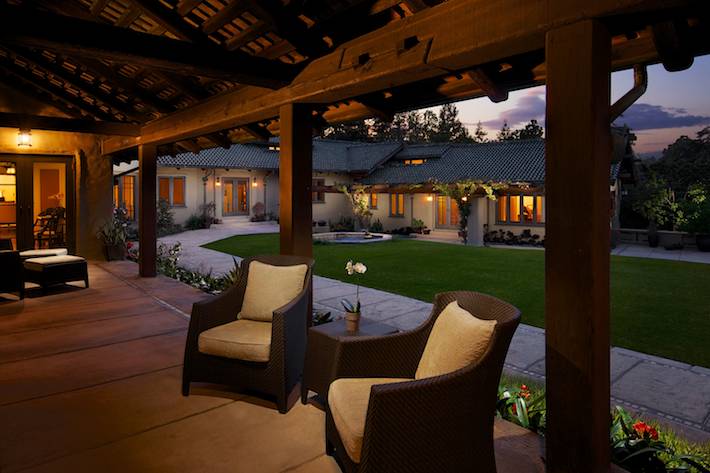 GL-1 used to light under foreground roof, plants, home, etc
GL-1 used to light under foreground roof, plants, home, etc
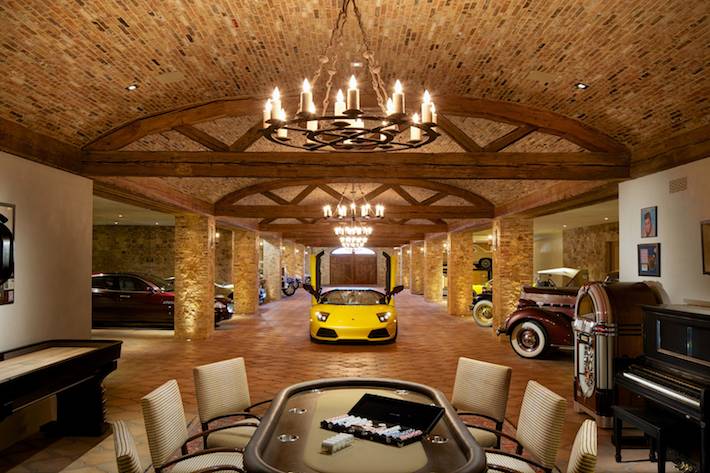 GL-1 used throughout
GL-1 used throughout
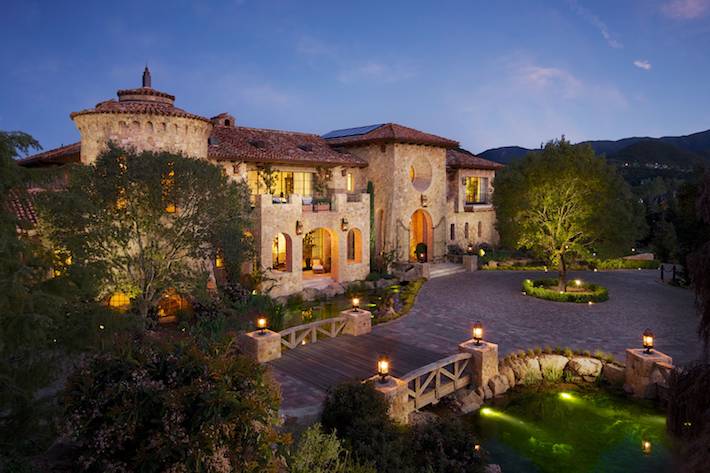 GL-1 mixed with speedlights and PocketWizards
GL-1 mixed with speedlights and PocketWizards
 Gl-1 mixed with speedlights, GL-1 used to light trees and foreground in steady passes
Gl-1 mixed with speedlights, GL-1 used to light trees and foreground in steady passes
So in a sense, what we have is a sort of hotlight that's been turned into a speedlight. A speed-hot-light if you will. A hot light without the cables, cords, heat, and size, that fits in the palm of your hand.
I'll either use it in a long exposure role to paint over large swaths of a piece of architecture, or do some detail painting to mask together later in Photoshop on bigger jobs. At this point, I use it in conjunction with speedlights and monolights for the best of everything. It fills a role perfectly for me - the ability to paint light in a very detailed way without annoying cables. The added bonus of not setting fire to my hand like my Arri lights is great, as well. For large areas that require a lot of light, I still use speedlights - as they create a short-duration, high-intensity light. But when I can get away with it, I am loving the GL-1 for a long-duration light that can cover a lot of ground and do some real detail painting for me.
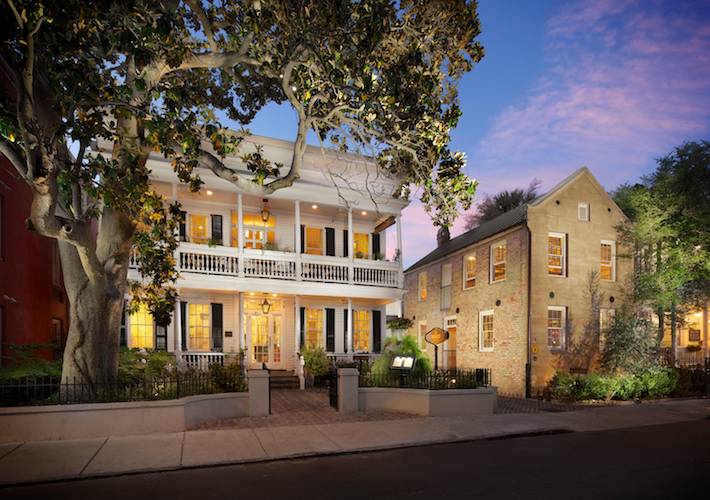 GL-1 mixed with speedlights and PocketWizards
GL-1 mixed with speedlights and PocketWizardsSOUNDS LIKE A $700 MAGLIGHT TO ME...
Not even close. I've gotten into this argument with Lee Morris ad nauseum. I've tried flashlights for this sort of thing, and they just do not cut the mustard. The light that comes from the GL-1 is seriously high quality. It's a zoomable fresnel, which creates a near-perfect spot of light, with nearly no falloff from edge to edge, and no hotspots across the entire diameter of the light. Power is infinitely adjustable between full and nearly off, so you can light spaces large and small. There are adjustable flashlights on the market, of course - but as far as I know, there is no one flashlight that is recommended by photographers for it's great control, perfect light, and consistent brightness.
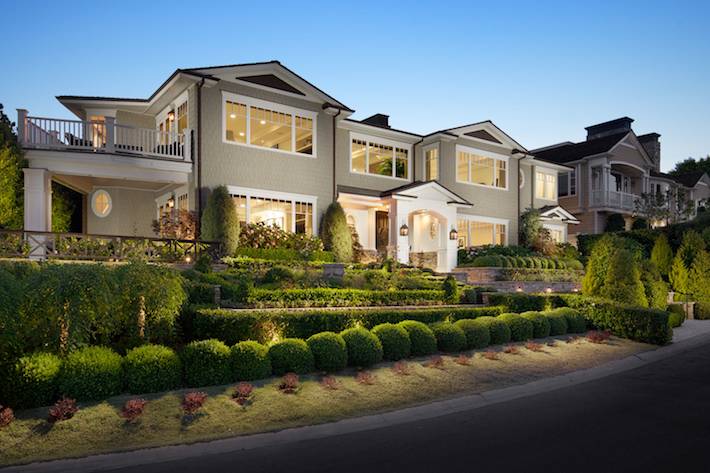 GL-1 for foreground lighting, speedlights for house
GL-1 for foreground lighting, speedlights for houseAnd then there's the color. Again, there aren't really any flashlights which are made to create a perfect and consistent color, it's just usually not a priority when compared with sheer power. Not so with the GL-1. I looked at the light through a spectroscope and the light produced by the GL-1 is absolutely perfect throughout the entire color spectrum AND through the entire power range. What that means is that the GL-1 produces a light that doesn't favor any part of the visible spectrum; so you'll get an even and consistent color of light on whatever it is you're painting. Fluorescent energy efficient bulbs and LEDs, for example, will show very choppy results through spectrometers, and as a result, they're notoriously difficult to color balance for and a lot of colors don't play nice with those light sources. While the GL-1 outputs a warmer temperature of light, correcting it in post is so simple due to that great consistent color.
 GL-1 for everything
GL-1 for everything GL-1 for trees, speedlights and PocketWizards for house
GL-1 for trees, speedlights and PocketWizards for houseSo while you may be tempted to use a flashlight in lieu of the GL-1, you'll be quite frustrated. The even spread of light, the adjustability, and the great color consistency probably won't be found in any flashlight. Is that worth the extra $600 to you? Perhaps not, but when it comes to delivering great imagery with minimal fuss, I'm okay with that.
You also get the threaded filter mount on the front, something that no flashlight to the best of my knowledge has. With it, you're able to gel the light and modify the light with a couple of modifiers from Tiffen. They claim that more are in the works - I'm really looking forward to seeing what they come up with, as I'd love a sort of mini-softbox for interiors detail work.
It also comes with a 1/4 20" mount on the bottom for affixing it to a tripod or lightstand, which is great for video light or using it as a hot light when lighting a space. Again, not a huge feature, but a nice convenience and something else that sets it apart from your typical X-million candlepower flashlight.
THE VERDICT
If you are regularly shooting architecture and are already using a combination of hotlights and flash, this might be a great tool for you to try. It mixes the advantages of hot lights (long duration, fresnel focusing, instant feedback, easily controllable color temps) with the ease of use and portability of speedlights. No cables, no heat, great color. While it may struggle to put out as much power as some of the bigger hotlights, it can certainly hold its own, and at night this may be all you need. If you're looking to get into using hotlights and are already using flash (or no lights at all) this might be a great solution for you, as well. The learning curve is a bit steeper than with speedlights (that means it's a bit easier), but you may run into issues with correcting the warm color temperature if you're not already familiar with gelling and mixing light sources. This is also a great tool for someone looking to get into serious lightpainting in any application - as the versatility of this light far surpasses that of cheaper flashlights commonly used in this genre.
PROS:
-Great, consistent light
-Long battery life
-Infinitely adjustable power
-Focusable beam, from wide to narrow
-No heat as is typical with regular hot lights
-Incredibly portable
-Very simple, easy to learn
CONS:
-Price
-Build quality could be slightly better - I cracked the tabs that held the battery in. Truth be told, this could have just been me being a moron
-Could be more powerful...lights could always be more powerful!
In the future, I would love to see Lowel release an update to this light where we can adjust the color temperature of the light right from the handle or similar. I would gladly pay $1000 for that - imagine a hotlight with the portability of the GL-1 and a wide spectrum of colors at your disposal! I'm salivating at the thought...
The GL-1 is available from B&H for $699 with free shipping, and accessories are available from Lowel's website. For more information, check out the GL-1's information page here.







Second pics from the top: ultimate man cave.
But for 700$, isn't 2.5 LP180 more bang for the buck?
Because to me it seems the only advantage to this is the ability to see where you are lighting "on-the-go". And it seems a steep price for that "plus" alone...
No, strobes would not be more bang for the buck. As for your second point, here's a link to a great article that explains in detail why you're wrong:
http://fstoppers.com/architectural-photography-lighting-mike-kelley-lowe...
wow. Feeling dickish a bit?
Have some tea it'll pass.
But this just brings me back here.
Dang it, it did it again.
For light painting, this would give you a lot more control and a better idea of where/what you're lighting and have already lit.
Cheap hotshoe flashes are great for interiors, but having something built for light painting the exterior is really handy.
So I used this a LOT yesterday and... yeah it rocks for this ONE specific purpose. I can't imagine it being useful at all for portraits.
While I agree (and I'd also only be using it for exteriors), there are certainly a lot of wedding photographers that love using constant led lights for their work.
Portraits - you'd be amazed at what can be done! Nobody's going to get hurt - just have some fun!
Jaron - go to www.gl1hotlight.com to see all the different portaits. I use it all the time and the portraits are where it's most useful.
Brian, What settings do you usually use when using this (ISO).
Hey Matthew!
It depends on the environment but avearge ISO is around 2000 in hotels, or dimly lit rooms. I have no problem pushing to 8000 ISO with the D4 - You have to determine which images are going to sell larger or print larger in a book. All portraits stay under 4000 ISO for example. Also - the GL-1 does not replace our flash units. I still use strobe for a lot of things but it does produce the most dramatic emotional images of the evening.
Hope that helps.
That's exactly what I was looking for.
Keep up the good work over there too
I'm just convinced that you could create amazing photos with a laser pointer and enough time, Mike
:-
If this was a product for anything other than photography, it would cost about $50-$100 because it's essentially a rechargeable flashlight. Since it's got "for photography" attached to the description, they ask for $700 for it. Yeah yeah yeah, I know, it's got better control over color temperature and maybe they used a fancier mirror and lens on it than a flashlight but it's the exact same concept. Is this thing really worth $540 more than this thing? http://www.walmart.com/ip/Coleman-LED-Rechargeable-Spotlight/8187724
A $300 speedlight has so much more technology in it. It has built in TTL, remote triggers, and most importantly, freezing power.
I don't disagree that we're certainly getting charged a premium for these features, but it's those features that really make it *that* much better than a standard flashlight. The evenness of the light and stability of color temperature are invaluable. Because of these features, this glorified flashlight will then cost more than a regular flashlight, and when sitting on a shelf next to the walmart flashlight...virtually no one "standard consumer" would pay even a $50 premium for those features. Because of that, they'll sell these in much smaller quantities, and therefore don't have the luxury of producing these in *huge* batches like most flashlights, and that then increases the price.
Again, I agree that this costs a whole heck of a lot, and much more than a similar flashlight aimed at non-photographers. I wish it was cheaper...but for the price of one job, I could own a light that would not only simplify my workflow, but (more importantly) increase the quality of images and portfolio. That, in turn, can help me raise my prices even more, and the costs of the $700 glorified flashlight becomes very quickly negligible.
A speedlight may be more useful to your standard multi-genre/non-specialized photographer, but I see this as a purpose-built tool for those who have a specific need in mind when purchasing it. I own a whole lot of gear for a wide variety of very different tasks, most of which are specialized for those tasks (this is, after all, my career) so adding another potentially "overpriced" tool to my kit in order to simplify and improve my work seems completely reasonable to me in the long run. I don't own one of these yet, but it's definitely on my list.
These aren't real estate photos - my job is to create an image that will go on a client's website and bring them more clients in return. In order to do this, I need to get my client's target market to say 'holy crap..' every time they see a picture that they hired me to take.
That being said, the camera is a machine, and the eye is a miracle. In most of the scenes I photograph, you actually can see light everywhere that I've painted it, the camera just doesn't pick it up. I don't really 'add light' to places where it isn't - I only augment and embellish what is already there. There has to be a rhyme or reason to it, otherwise it looks horrible. I'm just working with and massaging what is already there.
I cannot agree more with you on the fact that just because "its made for photography" should cost $700.
From the Commercial photography point of view, well, that's part of commercial architecture photography. Most houses,buildings are lit up that way for that purpose.
I find all this light painting stuff terrific! I built the early part of my career on light painting about 25 years ago (using film & polaroid) and, as styles came and went, slowly moved away from light painting techniques. Now, with the resurgence of interest in this time honoured technique, its really fun to see light painting is being used in the photographer's toolbox....I've even starting playing around with it again. Great post!
BTW - light painting is ALL about how well you can control the shape of light coming out from any given light source. Just bill the unit back to your client as part of your "signature" style.
http://www.ebay.com/itm/Headlight-CREE-T6-3-Mode-4LEDs-3000lm-500m-Bicyc... I think you can use those bicycle LED lights you can find them on ebay or many other places
No, you can't use these cool white LED lights for photography. You need incandescent bulbs or at least High CRI (>90) LEDs which can be found in custom made flashlights but not the cheap ones you get at Wal Mart or ebay...
you mean can't use because the color temperature? what about add some warm gel to the front?
LED lights come in warm and cool as well though not quite as warm as halogens. This particular product is also LED FYI.
Mike~ Great review. I have been following this light closely for awhile. I was hesitant to buy at first strictly on not knowing it's capabilities outside and in, along with the price. I shoot a lot of hospitality work for Hilton and Marriott properties, and I'm currently traveling with a solid 300+lbs of gear. I use the same mixture currently of hot lights (already a loving Lowel user) and speed lights, I encounter the same complications and while I do think $700 is a little extreme I already know this would make my life easier. We actually share similar shooting methods, so I'm stoked to see your results. When I shoot on location it's often a VERY busy shoot schedule over 7 days or more, and there is A LOT to shoot with a hotel. Combine that with the fact that we obviously can't shut down the entire hotel there are still tons of people walking around which requires a lot of neon gaffer tape to make people aware of the very hot lights setup, not to mention pool area's where power can be limited and it's use can be a liability. In short it all takes time. I have always been a huge fan of hot lights in my hotel work, and the speedlights were always my go to for similar reasons as yours. Any idea on effective distance in the twilight hours? A lot of my properties are very large, and I often setup multiple 1000watt Lowel DP lights to light the building. It would be interesting to know how far it can be pushed effectively, obviously better for details, and foreground but i was just curious.
I wish this thing was more like $500, but at this point, in the end, the time it can save alone is worth that, not to mention the more creative elements that can be applied. Hell, I'll probably save the money in gaffers tape alone :)
On a side note, I'm also a headshot/environmental portrait photographer. I don't shoot weddings really but I can see this being helpful for that, I can't say I would ever use it as a key light in a portrait though, maybe to light the backgrounds, but I have lights already for that. I think in the portrait photographer world this is merely a luxury, that isn't really needed, at least at the price. However from a marketing stand point I can see why they pushed it for that market. Personally I think the benefits for this light are far greater in the commercial architectural area of photography, along with landscape work. There are just a lot more portrait/wedding shooters :)
Hey Dylan,
Thanks for writing. Glad to see that you liked the review- and appreciate you chiming in. As far as effective distance goes, I would put it at something like 50-100 feet, but much better when you can work close in at a lower ISO and do some detail painting. I like to use it to paint trees, plants, chairs, architectural details, etc, at around iso 200-400. Of course you can get more range if you bump it to 800 or shoot with a larger aperture, but there's of course a quality tradeoff. I would keep the Arri's for the long distance stuff, but this is just so so much easier to work in close with. I agree with pretty much all of your post - and I will also mention that now that I've been using this for a few months, my workflow would be slowed down substantially by going back to the old ways. It's just such a great tool to have in place of big clunky hot lights and speedlights. It fills our a spot in our niche just perfectly.
Thanks for the reply Mike, Thats a good distance, likewise I would never probably use it that far, but for Murphy's Law sake I always like to know how hard something can be pushed, just in case my ever increasing memory loss requires me to use it for more than I normally would :) I'll definitely be using it more for details as I'm rarely beyond 400 ISO. For sure the 1000 watt lights are staying in the kit...totally necessary for lighting large buildings, also behind diffusors they are fantastic for interiors as well :) Thanks again and if you find yourself in NYC hit me up, beers on me :)
I have seen a demonstration video of this light being used for portrait work. Not your traditional portrait setup - If you are going for a moody, low key look outdoors at dusk. In this sense, far more of a luxury item for portraits than with architecture.
Hey Mike! Great post! Any chance of you making a video of how you are using this on your shoots (the demos on youtube are just horrible)? I wonder if a gelled MTE H8-2 spotlight would still not work as good in spite of evenness of the spotlight (no spill). It has high, medium and low output setting too.
Mike,
Thank you for your great article.
I felt like a lone wolf using this product reticent to tell anyone about for fear of being "mocked" by all of the people who felt it was too expensive etc. I can personally attest to many shots that without the GL-1 would have been impossible to capture whether because of timing, lack of electricity etc. I was shooting for a developer and anticipated some exterior lights to come on that were on a timer for my twilight shot but the lights never came on, I fired up the GL-1 and was able to light the facade, trees etc from across a pool with great ease. It basically saved the shot and has easily paid for itself with shots like the one explained.
Have you done a video of your technique using the GL-1 and or speed lights? I would be interested in learning more technique etc.
Great images.
Aloha,
Ethan
www.ethantweedie.com
I was told by a major Photo retailer here in Toronto that every GL-1 has come back to be serviced due to the battery falling out of the unit. Has anyone else had this problem?